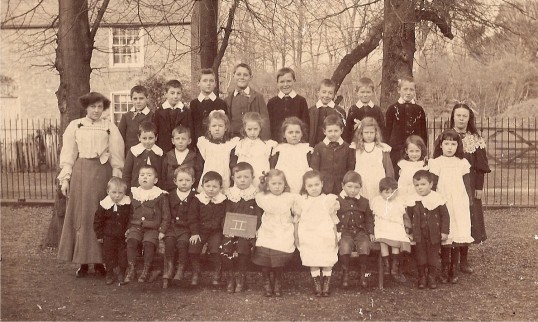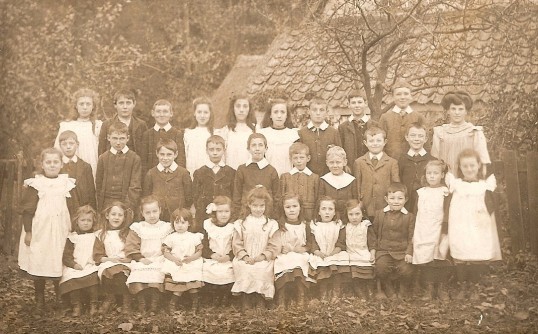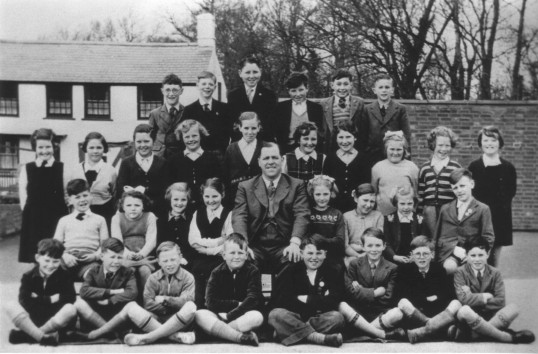The current building began as the village school back in Victorian times. The following brief history is displayed by kind permission of the Upwood and the Raveley Local History Group and is taken from their 1998 publication: "Upwood and Great Raveley 1850 - 1950".
The first record of a school in the village dates fr om 1871 but some form of education for children was obviously taking place in the village before this time. The 1851 census return records two school -mistresses - Hannah Hall and Maria Kington and a school-master William Allen Walker, a lodger in the home of Thomas Key.
om 1871 but some form of education for children was obviously taking place in the village before this time. The 1851 census return records two school -mistresses - Hannah Hall and Maria Kington and a school-master William Allen Walker, a lodger in the home of Thomas Key.
The national village school was built in 1871 with funds donated by R.H. Hussey Esq., the Lord of the Manor at Upwood, with space for 63 children. The census return for that year records that Emily Young was the National School Mistress, supported by a pupil teacher, infant teacher and 2 monitors. Conditions at that time must have been less than ideal as the census reveals 90 children of school age in the village.
The 1891 census return shows Jane Carpenter as the Head Mistress with Sarah Ann Raby (a lodger with Miss Carpenter) as the Infant Teacher. The school house was somewhere in the High Street.
In 1893 the school was enlarged at a cost of over £300, funded again by R. H. Hussey Esq. The plans for the extension show two main rooms - the Infant room and the Mixed room - both being 32ft x 18ft. There was also a boys' lobby, a girls' lobby and an infant cloakroom. Two playgrounds, one for boys at the back and one for girls and infants at the front together with two outside blocks of earth closets are also depicted.
Unfortunately the log books for the school cannot be traced but the Admission Register does give an insight into reasons for children leaving school. In 1880 the school leaving age was set at 10 years, rising to 11 years in 1893 and 12 years in 1899. It was not until 1918 that the school leaving age was raised to 14 years, increasing to 15 years i n 1944.
n 1944.
Many of the children leaving Upwood School went straight to work, either on the land or in industry. Some of the other reasons given for leaving include "gone into private service", "burned to death", "required at home" and "not strong enough to come in winter". Some children were fortunate and gained a place at the local grammar school in Ramsey. The Admission Register also shows any previous school attended and, between 1891 and 1900, families with school-age children were moving into Upwood from places as far afield as Stockton, Sheffield, Leeds, Colchester and Portsmouth.
The early managers of the school are unknown since the only available minute book dates from 1903. The first recorded managers were Revd. Cooksey (chairman), Mrs Cooksey, Messrs. Thomas Smith, Frederick Townsend, F.
Kidman and George Thompson. The managers were responsible for administrative matters such as appointing and dismissing staff, setting holidays and dealing with Reports from the Inspectors. Typical business for 1903 included permission to close the school on Wednesday 12th August 1903 for the Choir Outing to Hunstanton and agreeing a six week holiday for Harvest. In May 1904 it was considered unnecessary to allow a half-day holiday for Ramsey Show but the Thursday and Friday of Feast Week (30th June / 1st July) were given as holidays. There were staffing problems with many changes of Head Teacher over the years. In May 1905 the salary offered was £65 per annum plus house and coal. In January 1915 things were not as they should be at school. The managers reported that they were "so dissatisfied with the management of the school - the work and the discipline - that they have decided top terminate the Head Teacher's engagement." The newly vacant post was advertised at £75 per annum plus house and coal!
In March 1917 Mabel Gaunt was appointed monitress and she worked at the school until 1921 when she resigned and her place was taken by Grace Gaunt.
In 1903 Mrs. Jacobs is recorded as th e school cleaner. She wrote to the managers asking for 2/6d for cleaning the school, saying that she had previously cleaned for less because it was made up in other ways. It was agreed that she should be paid 2/6d per week but the payment was to include two thorough cleanings for which she had previously been paid extra.
e school cleaner. She wrote to the managers asking for 2/6d for cleaning the school, saying that she had previously cleaned for less because it was made up in other ways. It was agreed that she should be paid 2/6d per week but the payment was to include two thorough cleanings for which she had previously been paid extra.
By March 1920 Mrs. Slack was cleaning the school. The fires had to be laid and the cleaning completed by 8.30am.
During World War II the Admission Register show the instability of the times with evacuees registering at the school. Time spent at the school was often short - two brothers were admitted on 17th July 1944 and left to return home on 26th September.
A school survey carried out in 1946 records that there were two female teachers with 34 pupils. Heating was by anthracite stoves and lighting by oil lamps with one roof ventilator. Sanitation comprised two pail toilets and a urinal for the boys and three pail toilets for the girls.
The school closed in 1959 when children transferred to the new school on the outskirts of the village adjacent to the RAF base. The building is now the village Hall.
